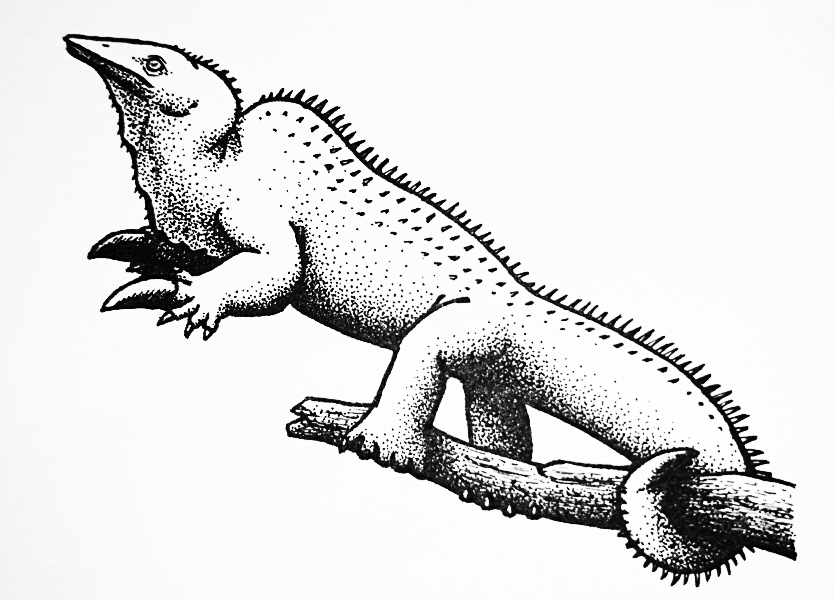What Triassic animal has a name that sounds like a Transformers character?
Living in Texas, USA, during the Late Triassic, about 229-226 million years ago, Triopticus was a type of archosauriform reptile (a “cousin” to crocodiles, pterosaurs, and dinosaurs). Classifying it any more specifically than that is rather difficult since it’s only known from a single partial skull.
It had five large bony bosses on its head that convergently resembled the domes of pachycephalosaurs, suggesting it may have engaged in similar headbutting or flank-butting behavior. At the back of its skull there was also a distinctive deep pit that looked like a “third eye socket”, inspiring it its name – although this feature probably wasn’t actually a parietal eye, instead just being the result of the way several of the bosses came together at that point.
The rest of its appearance is unknown, and this reconstruction is rather speculative as a result. But based on other archosauriformes it was likely to have been a small semi-sprawling quadruped, possibly around 80cm in length (2′7″).











